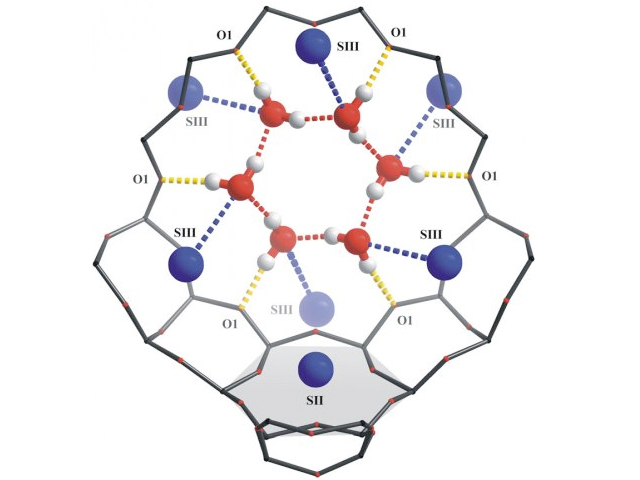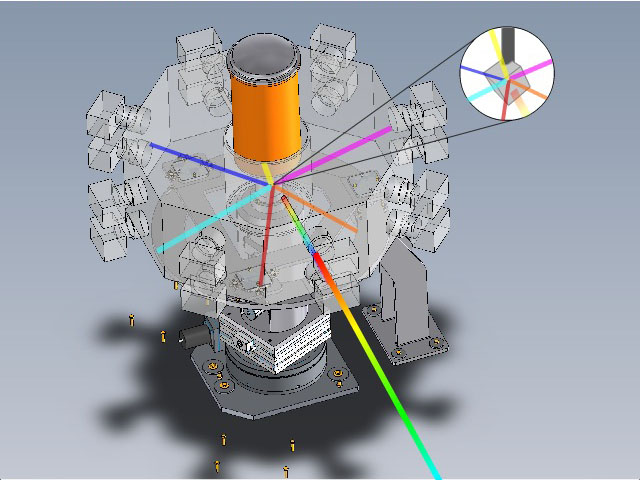D2B
High-resolution two-axis diffractometer
The formation of a cyclic water hexamer in zeolite NaX
Neutron powder diffraction is a valuable tool for the study of hydrogen and water molecules in materials. This is demonstrated here with a study of the adsorption of water on zeolites which is a subject of great scientific and technological interest due to the broad spectrum of zeolite applications as catalysts, adsorbents for separation processes, ion exchange, heat storage units, cooling devices and heat pump systems.
X-ray diffraction studies on fully hydrated faujasites, gave no convincing results about the arrangement of water molecules and extraframework cations in dependence on the water content. Thus, in order to understand the host-guest interactions in zeolite-water systems, neutron powder diffraction measurements were performed on D2B on faujasite NaX loaded with D2O.
These were combined with diffuse reflectance infrared fourier transform spectroscopic (DRIFTS) measurements for determination of the adsorption complex structures. It has been shown that there is strong evidence to the formation of cyclic hexamers of water molecules localised in the 12-ring windows between faujasite supercages (Fig. 1) which are stabilised by hydrogen bonds to zeolite framework oxygen atoms.
Ref.: "Adsorption structures of water in NaX studied by DRIFT spectroscopy and neutron powder diffraction", Hunger J., Beta I.A., Böhlig H., Ling C., Jobic H., Hunger B., J. Phys. Chem. B 110, 342-353 (2006).


